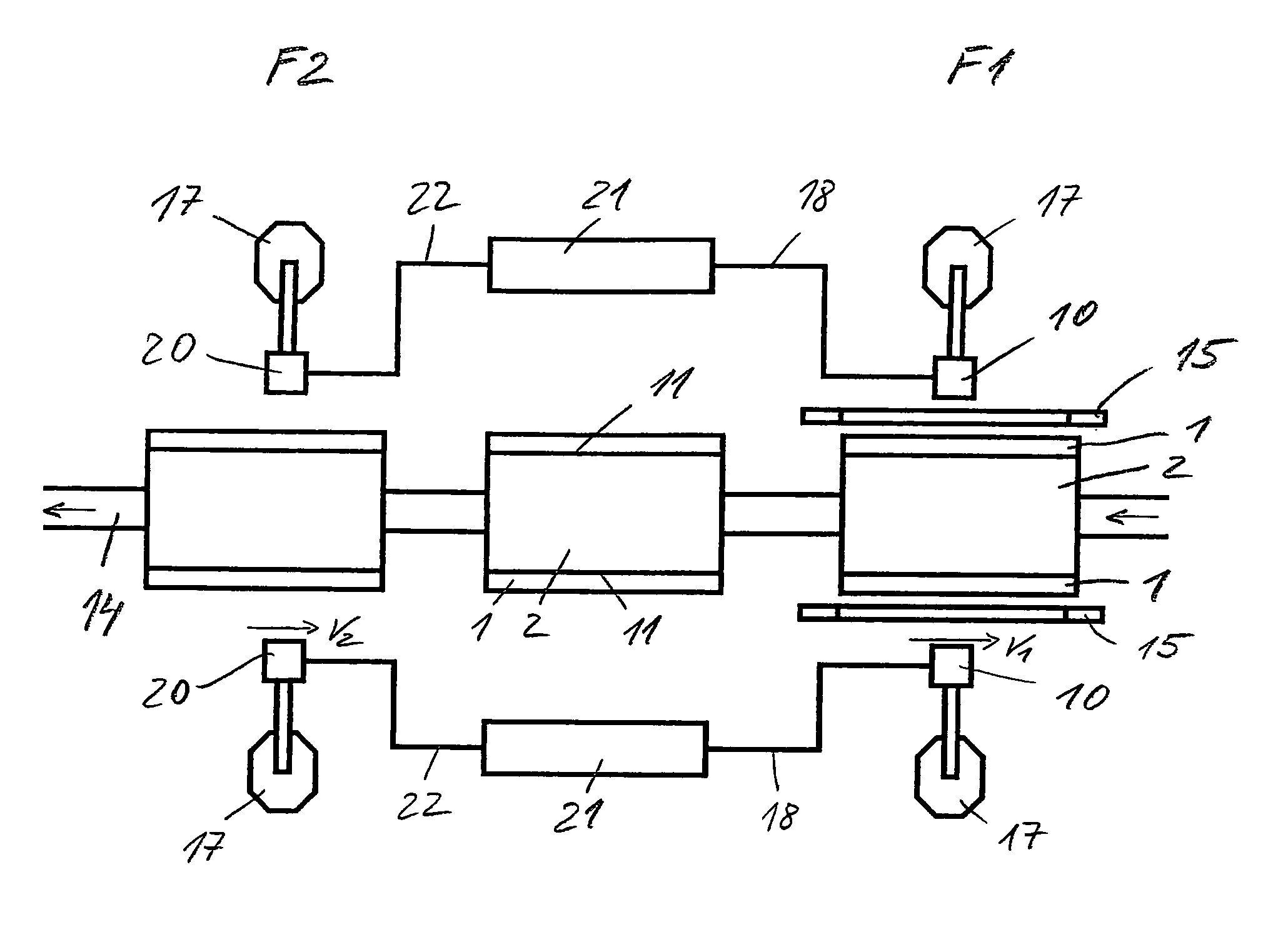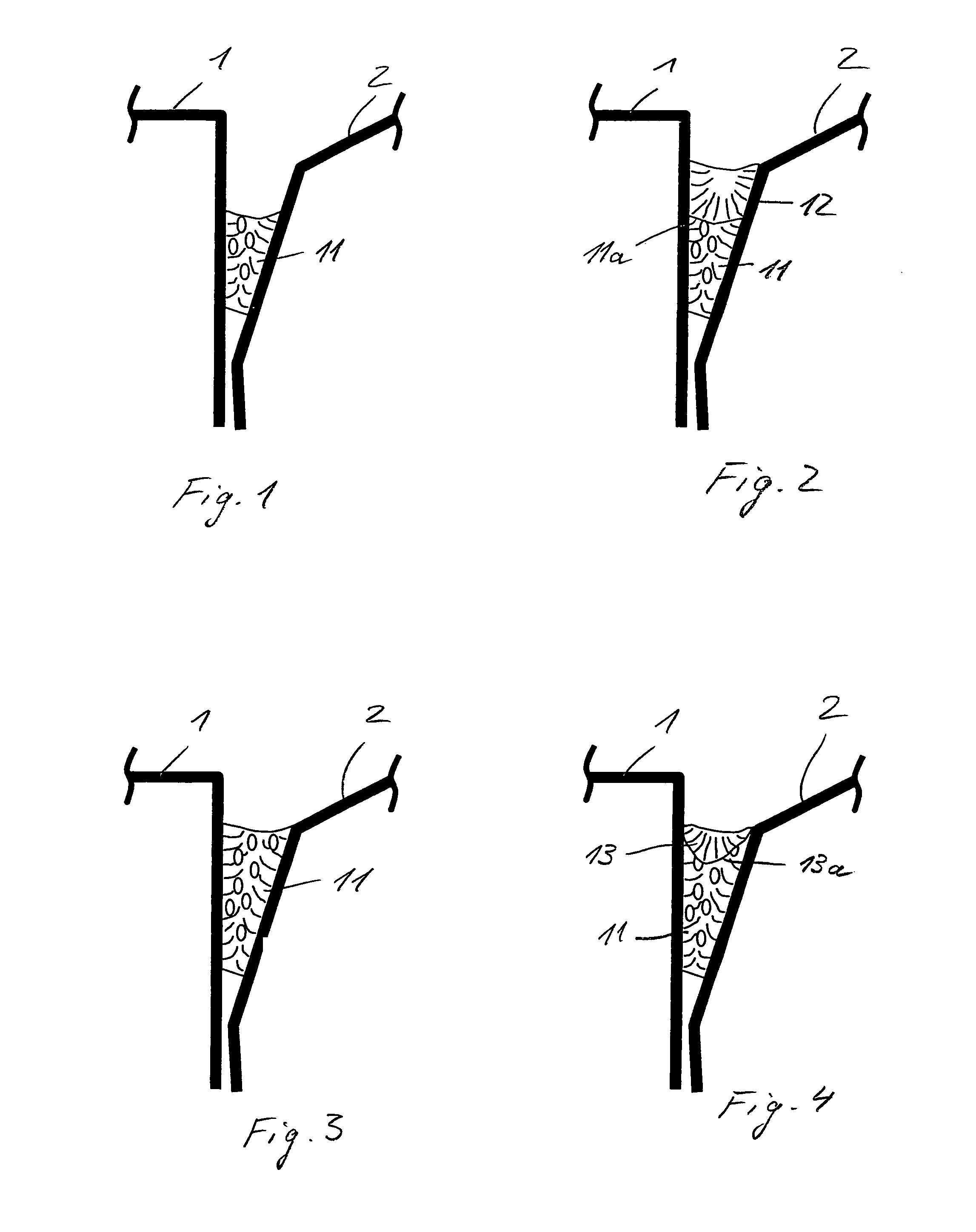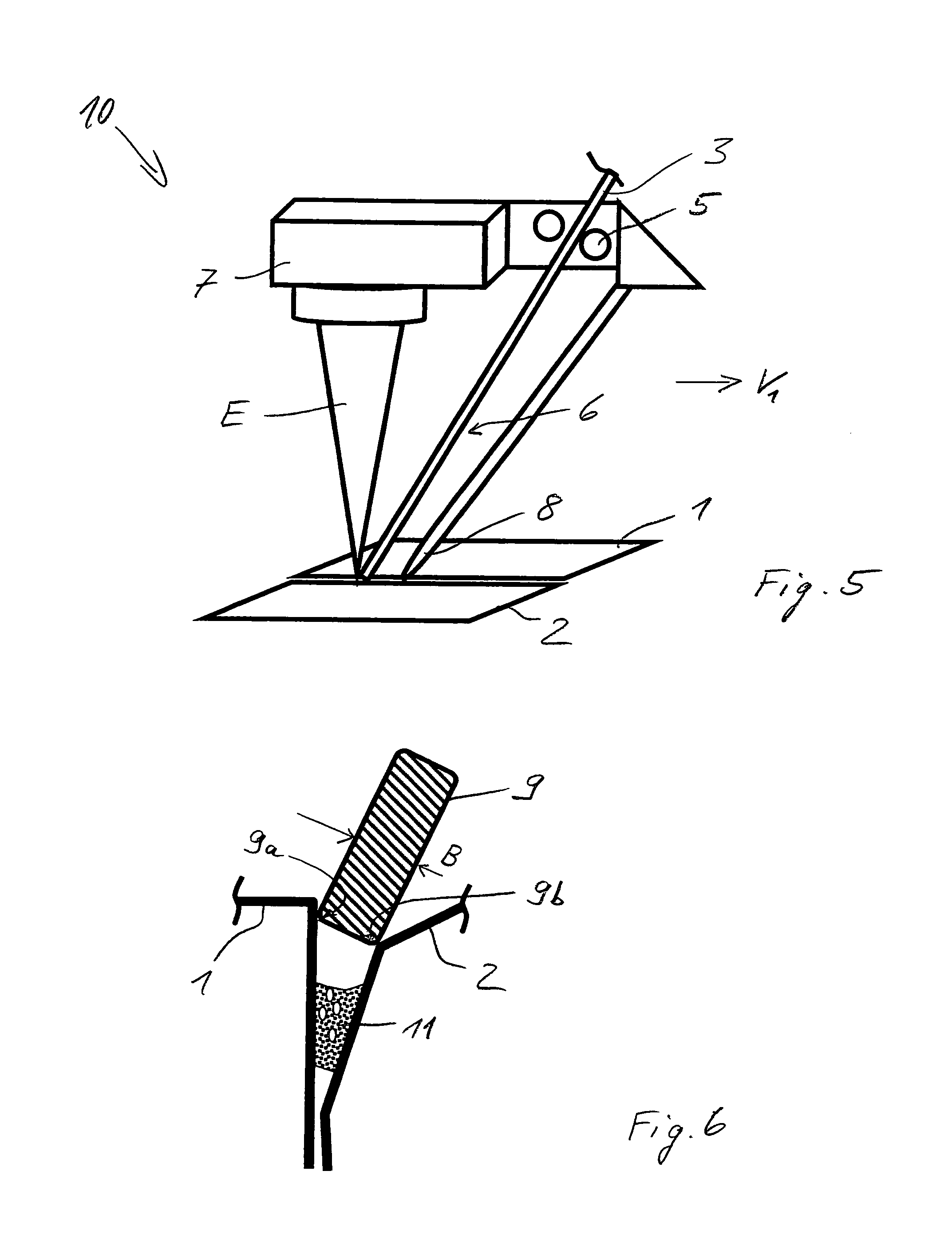Method of soldering or welding components
a technology of soldering or welding components, applied in the direction of soldering devices, manufacturing tools, auxillary welding devices, etc., can solve the problems of limited time available, suffer the quality of the soldering or welding seam to be produced, etc., to achieve the effect of reducing quality, increasing progressing speed, and increasing production speed for fixing seams
- Summary
- Abstract
- Description
- Claims
- Application Information
AI Technical Summary
Benefits of technology
Problems solved by technology
Method used
Image
Examples
Embodiment Construction
[0031]FIG. 1 show a cross-section of a component composite consisting of two components 1 and 2 and a fixing seam 11. The fixing seam 11 connects the components 1 and 2 along a jointly formed joint. Only the two flanks of the components 1 and 2 are shown, between which the joint and correspondingly the edges of the joint are formed. The component 1 is for example a side wall, and the component 2 is for example a metal sheet roof of a body shell of an automobile. The flank of the component 1 which faces the component 2 forms a progressive ratio relative to the component 2. The components 1 and 2 are in abutment at the base of the joint. The fixing seam 11 consists of a soldering material, for example a copper alloy or an aluminium alloy. The fixing seam 11 connects the components 1 and 2 permanently and fixedly to each other and in this sense has a geometry-forming effect on the component composite.
[0032]FIG. 2 shows the component composite after a covering layer 12 of soldering mate...
PUM
| Property | Measurement | Unit |
|---|---|---|
| diameter | aaaaa | aaaaa |
| diameter | aaaaa | aaaaa |
| diameter | aaaaa | aaaaa |
Abstract
Description
Claims
Application Information
 Login to View More
Login to View More - R&D
- Intellectual Property
- Life Sciences
- Materials
- Tech Scout
- Unparalleled Data Quality
- Higher Quality Content
- 60% Fewer Hallucinations
Browse by: Latest US Patents, China's latest patents, Technical Efficacy Thesaurus, Application Domain, Technology Topic, Popular Technical Reports.
© 2025 PatSnap. All rights reserved.Legal|Privacy policy|Modern Slavery Act Transparency Statement|Sitemap|About US| Contact US: help@patsnap.com



